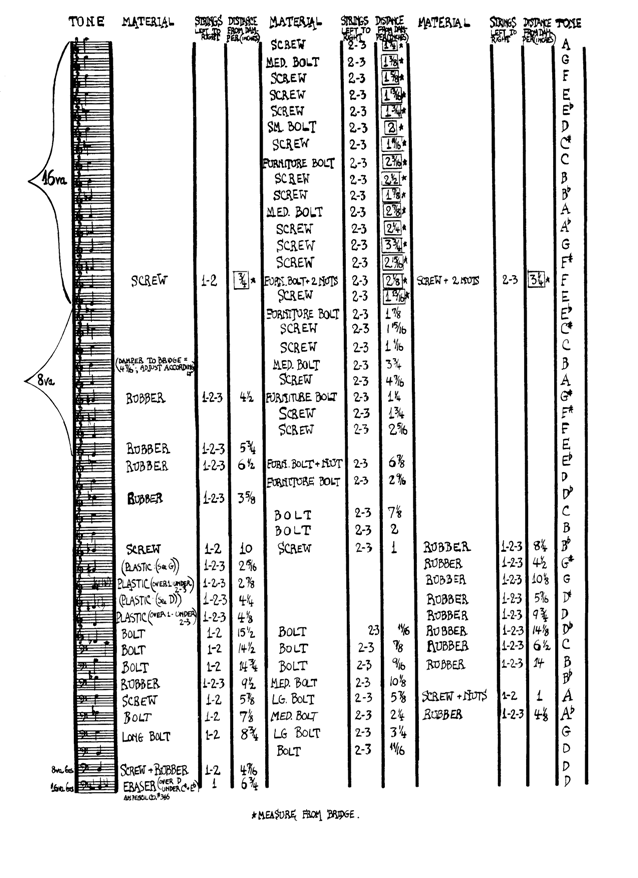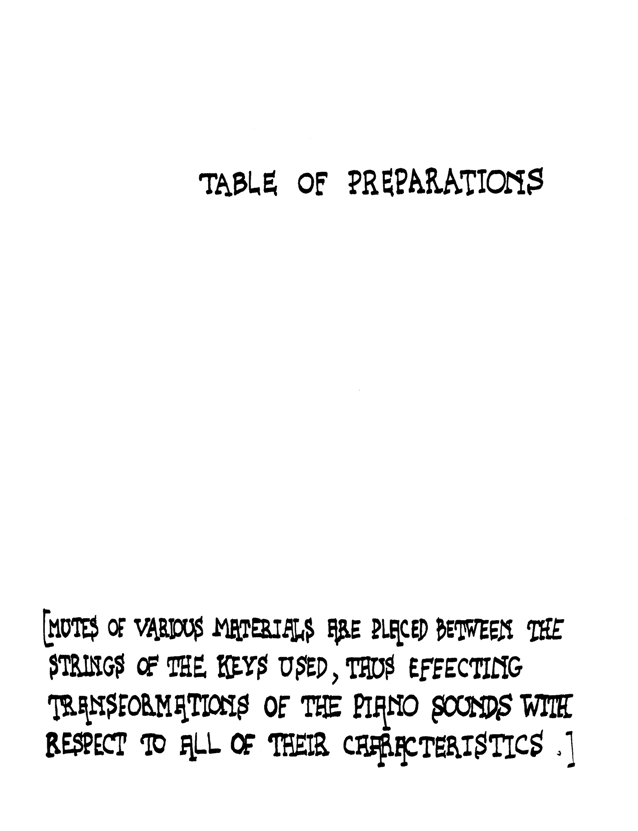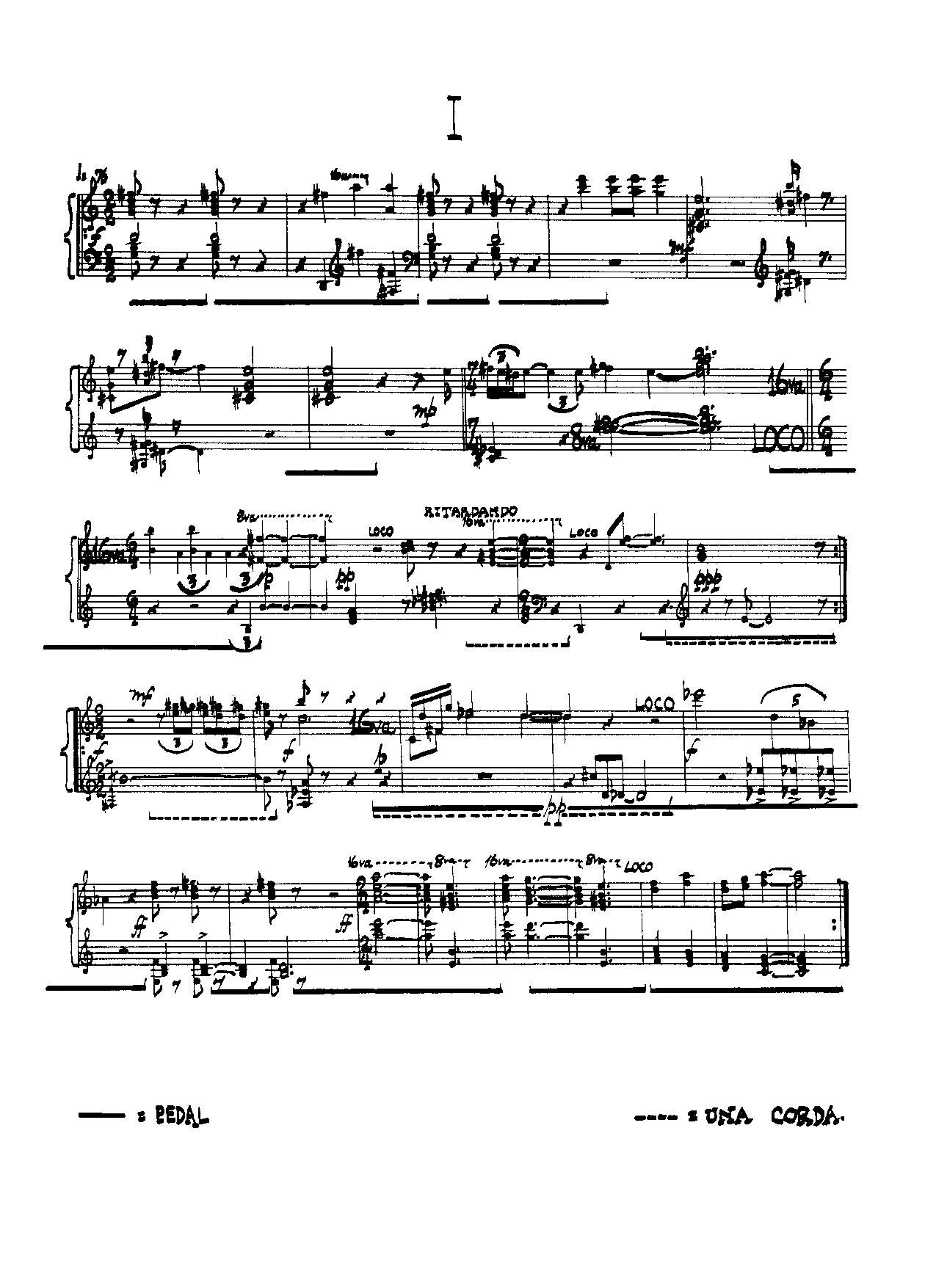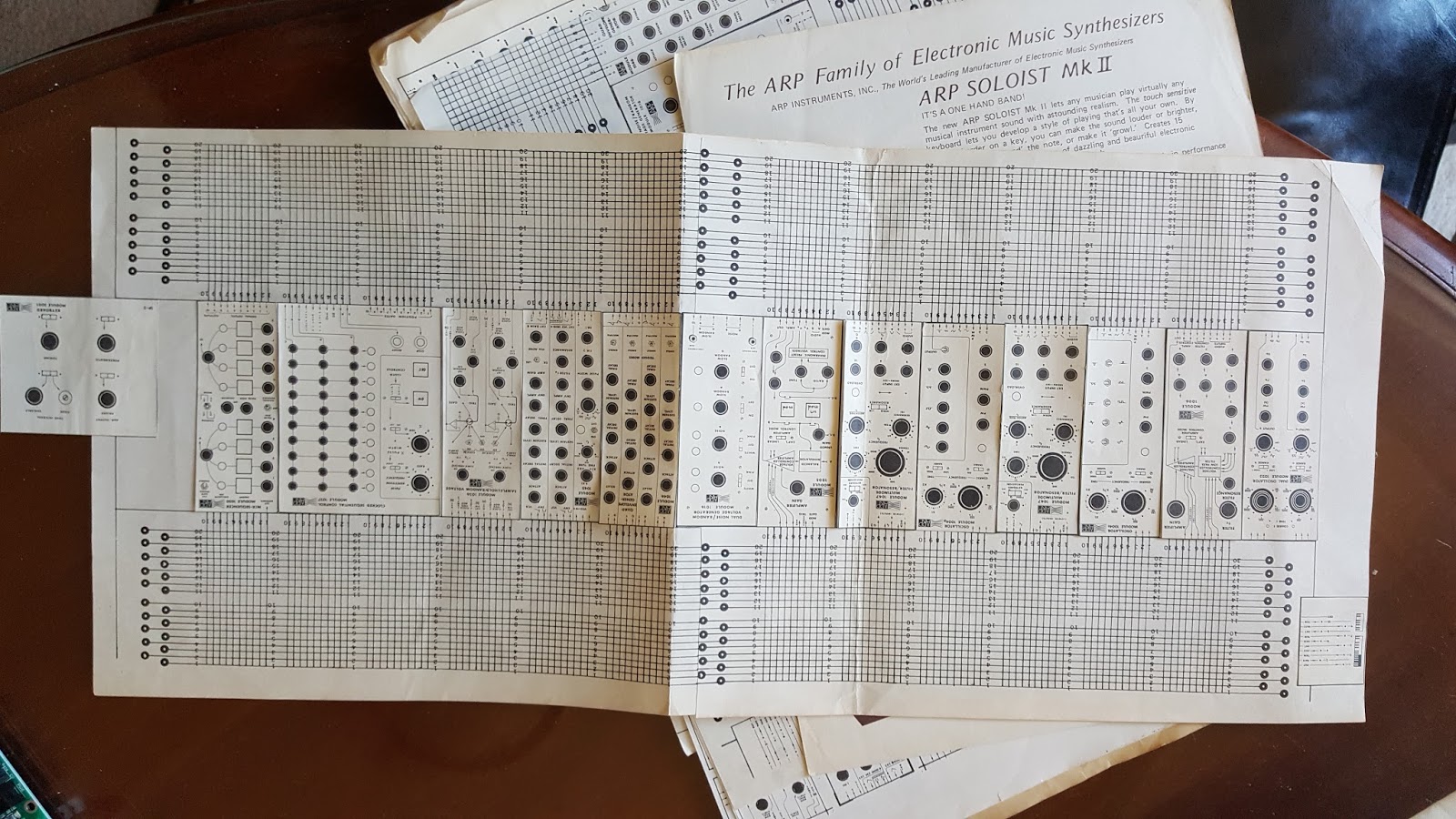Graphic Scores-avant-garde: Difference between revisions
Andre Castro (talk | contribs) |
Andre Castro (talk | contribs) No edit summary |
||
| Line 1: | Line 1: | ||
=Graphic scores in 20th century avant-garde= | =Graphic scores in 20th century avant-garde= | ||
http://www.juilliard.edu/sites/juilliard.edu/files/journal/2012/05/cage-john.jpg | http://www.juilliard.edu/sites/juilliard.edu/files/journal/2012/05/cage-john.jpg http://www.juilliard.edu/sites/juilliard.edu/files/journal/2012/05/cage-manuscript.jpg | ||
John Cage will be the center figure of this session. Not only due to its the 20th century Western avant-garde music, but moreover, due to the extensive of his exploration of graphical scores, which range from more conventional open scores to systems for generating scores. | John Cage will be the center figure of this session. Not only due to its the 20th century Western avant-garde music, but moreover, due to the extensive of his exploration of graphical scores, which range from more conventional open scores to systems for generating scores. | ||
| Line 88: | Line 86: | ||
http://4.bp.blogspot.com/-nqUObFXUkjA/TnYhTjAp2fI/AAAAAAAAA4I/GD93eTTBup0/s1600/moogpatch2.jpg | http://4.bp.blogspot.com/-nqUObFXUkjA/TnYhTjAp2fI/AAAAAAAAA4I/GD93eTTBup0/s1600/moogpatch2.jpg | ||
http://1.bp.blogspot.com/__w9YdjE55dY/SLv4ixsoBCI/AAAAAAAAAIY/GPS8zTXKEyY/s1600-h/MOTM_Flute_Patchsheet. | http://1.bp.blogspot.com/__w9YdjE55dY/SLv4ixsoBCI/AAAAAAAAAIY/GPS8zTXKEyY/s1600-h/MOTM_Flute_Patchsheet.jpg | ||
https://3.bp.blogspot.com/-HVetoUaHXu0/VsVALYBLSOI/AAAAAAAAIt4/TZ7kBzTmSb4/s1600/20160218_141517.jpg | https://3.bp.blogspot.com/-HVetoUaHXu0/VsVALYBLSOI/AAAAAAAAIt4/TZ7kBzTmSb4/s1600/20160218_141517.jpg | ||
| Line 101: | Line 99: | ||
==John Cage ''Fontana Mix'' (1958)== | ==John Cage ''Fontana Mix'' (1958)== | ||
http://www.bbc.co.uk/staticarchive/5b15f7b4e45ec255d9017f253c4faed1ae95a2f2.jpg | |||
* Initially created for composing tape music | * Initially created for composing tape music | ||
* Luciano Berio's invited Cage to compose a tape piece at the studio of the Milan radio | * Luciano Berio's invited Cage to compose a tape piece at the studio of the Milan radio | ||
| Line 118: | Line 118: | ||
* 10 sheets with 6 different curved lines: solid or dotted, in 3 different thicknesses | * 10 sheets with 6 different curved lines: solid or dotted, in 3 different thicknesses | ||
=== Water Walk score === | |||
=== | |||
http://exhibitions.nypl.org/johncage/sites/exhibitions.nypl.org.johncage/files/1709953u.jpg | http://exhibitions.nypl.org/johncage/sites/exhibitions.nypl.org.johncage/files/1709953u.jpg | ||
| Line 168: | Line 166: | ||
http://exhibitions.nypl.org/johncage/node/203 | http://exhibitions.nypl.org/johncage/node/203 | ||
</pre> | </pre> | ||
= Bibliography = | |||
Revision as of 18:22, 24 January 2017
Graphic scores in 20th century avant-garde


John Cage will be the center figure of this session. Not only due to its the 20th century Western avant-garde music, but moreover, due to the extensive of his exploration of graphical scores, which range from more conventional open scores to systems for generating scores.
why graphic scores?
Keeping the focus on music or sound art, it should be asked why are graphic scores needed? Why were they employed in musical composition?
The immediate answer might simply be to express compositional approaches or ideas in a score that conventional westerner notation is not able to do.
What are the approaches and ideas that graphic scores is better suited to express, than conventional westerner notation?
- instrument configuration
- John Cage Sonatas and Interludes for Prepared Piano (1946-1948) - instrument configuration
- David Tudor Rainforest - instrument configuration
- description sounds gestures
- roles and responsibilities
- John Cage Fontana Mix (1958)
- examples from Umberto Eco's Open Work (1962)
- changing form
- John Cage's Theatre Piece (1977)
John Cage Sonatas and Interludes for Prepared Piano (1946–48)


- the prepared piano entered Cage's repertoire with the composition Bacchanale(1940) for a dance piece by Syvilla Fort
- Cage wanted to compose a piece with a large amount percussion sounds, however he lacked the space on space for this, and was only provided with a piano
- he started experimenting with placing metal, rubber and wood objects on the piano strings, to obtain percussion like sounds
- his preparation provided to a pianist a pallet of sounds and an interface that could only be achieved by a large number of percussionists
- although the score for Sonatas and Interludes for Prepared Piano is not a graphic score, it included graphic and text notes on how to prepare the piano



https://www.youtube.com/watch?v=3w7GeJCLpJc
John Cage Music of Changes (1951)

- composed for David Tudor
- in its compositional process Cage use the divination text I Ching: The book of Change as a chance mechanism
- by tossing coins one arrives at an hexagram and a corresponding ambiguous text
- change determined the sonority (not only pitches, but also complex sounds), durations and dynamics of the different sound events of the piece
https://upload.wikimedia.org/wikipedia/commons/6/6b/Iching-hexagram-08.svg Hexagram 8 Holding together
- https://www.youtube.com/watch?v=eAjKD12RkEY
- http://www.ichingonline.net
- I Ching
- List of I Ching hexagrams
Jonh Cage Imaginary Landscape N°4 (1951)
- An electronic composition for 12 radios, operated by two performers each
- the I Ching was used to create the score: notating volume and tune control
- More than created by chance this work was indeterminate, as the source of sound - the radio spectrum - it is not known

David Tudor Rainforest (I - 1968)(IV - 1973)

- "sound transformations without the use of electronic modulation: the source sounds, when transmitted through the physical materials, will be modified by the resonant nodes of those materials"
- "The contact mikes on the objects pickup the resonant frequencies which one hears when very close to the object, and then are amplified through a loudspeaker as an enhancement"
- "a large group piece actually, any number of people can participate in it… [E]ach person makes their own sculpture, decides how to program it, and performs it themselves"
- score: diagram describing the connection of the piece's constituent elements
- a piece that can compose itself out of its constituent elements
- indeterminacy



- http://davidtudor.org/Works/rainforest.html
- http://composers-inside-electronics.net/rainforest/rainforest/RAINFOREST.html
- https://www.youtube.com/embed/iT9HP48sHTg
- http://www.getty.edu/research/tools/guides_bibliographies/david_tudor/av/rainforest.html
- Holzer, Derek, and Mads BEch Paulszewski. n.d. “Rainforest 2012.” http://macumbista.net/files/rainforest_overview.pdf
- Driscoll, John, and Matt Rogalsky. 2004. “David Tudor’s ‘Rainforest’: An Evolving Exploration of Resonance.” Leonardo Music Journal 14: 25–30. http://www.jstor.org/stable/1513502
- “Vague Terrain 19: Schematic as Score | Vague Terrain.” 2017. Accessed January 24. http://web.archive.org/web/20150227025105/http://vagueterrain.net/journal19.
John Cage Fontana Mix (1958)

- Initially created for composing tape music
- Luciano Berio's invited Cage to compose a tape piece at the studio of the Milan radio
- The piece/score boroughs its name from Cage's Milanese landlady, Signora Fontana
- Although initially the score was created for composing tape music pieces, Cage understood it could serve other compositional contexts.
- More than a score, perhaps a meta-score, or a tool that allowed many scores to be created from it.
- Aria - for single voice
- Sounds of Venice (1959) - performance
- Water Walk (1959) - performance. Score https://www.youtube.com/watch?v=gXOIkT1-QWY https://www.youtube.com/watch?v=gXOIkT1-QWY
- Theatre Piece (1960) - for 1 to 8 performers of any sort (musicians, dancers, singers)
Elements of the score:
- 1 straight line
- 1 graph/grid
- 10 sheets with dots
- 10 sheets with 6 different curved lines: solid or dotted, in 3 different thicknesses
Water Walk score





Floor plan of Water Walk

John Cartridge Music (1960)
Score elements:
- 1 page of instructions,
- 4 transparent sheets: one with points, one with circles, another with a circle that looks like a clock face, and a fourth with a dotted curved line with a circle at the end of it
- 20 pieces of white paper with shapes on them.
Placement: superimpose the transparencies over the sheet with shapes to get a determination for playing. You may place the sheets randomly, one on top of the other, only making sure that the circle at the end of the dotted line contains a point outside a shape and that the dotted line intersects at least one point within a shape.
Instruction: Curved dotted line: is read from beginning to end (marked with a circle)
Points and circles represent events in the performance:
- when intersected by dotted line
- points are:
- sounds on (inside a shape) corresponding to that shape
- sounds off (outside a shape) the cartridge, meaning sounds made by other means than those made by the objects in the cartridges
- circles: mark changes of amplitude (inside a shape) or tone (outside a shape)
- circle boundary of a shape: change of object
- points are:
Clock face intersections by dotted line:
- enter: starting time.
- exit: ending time.
http://2.bp.blogspot.com/-5cy6N9OSGoo/UUR2VjRGJJI/AAAAAAAABO8/O8mPxY6Ptis/s1600/John+Cage+-+Catridge+Music.jpg http://www.arh.bg.ac.rs/wp-content/uploads/2015/09/201516_MASA_A23012_STUDIO_M03A_SEMINAR_LOJANICA_o.jpg</nowiki> http://www.jaimeoliver.pe/recipes/archaeology/cartridge https://www.youtube.com/watch?v=H_qgsOLnmkk&t=5s https://www.youtube.com/watch?v=VaNHAswN2hU http://exhibitions.nypl.org/johncage/node/203
